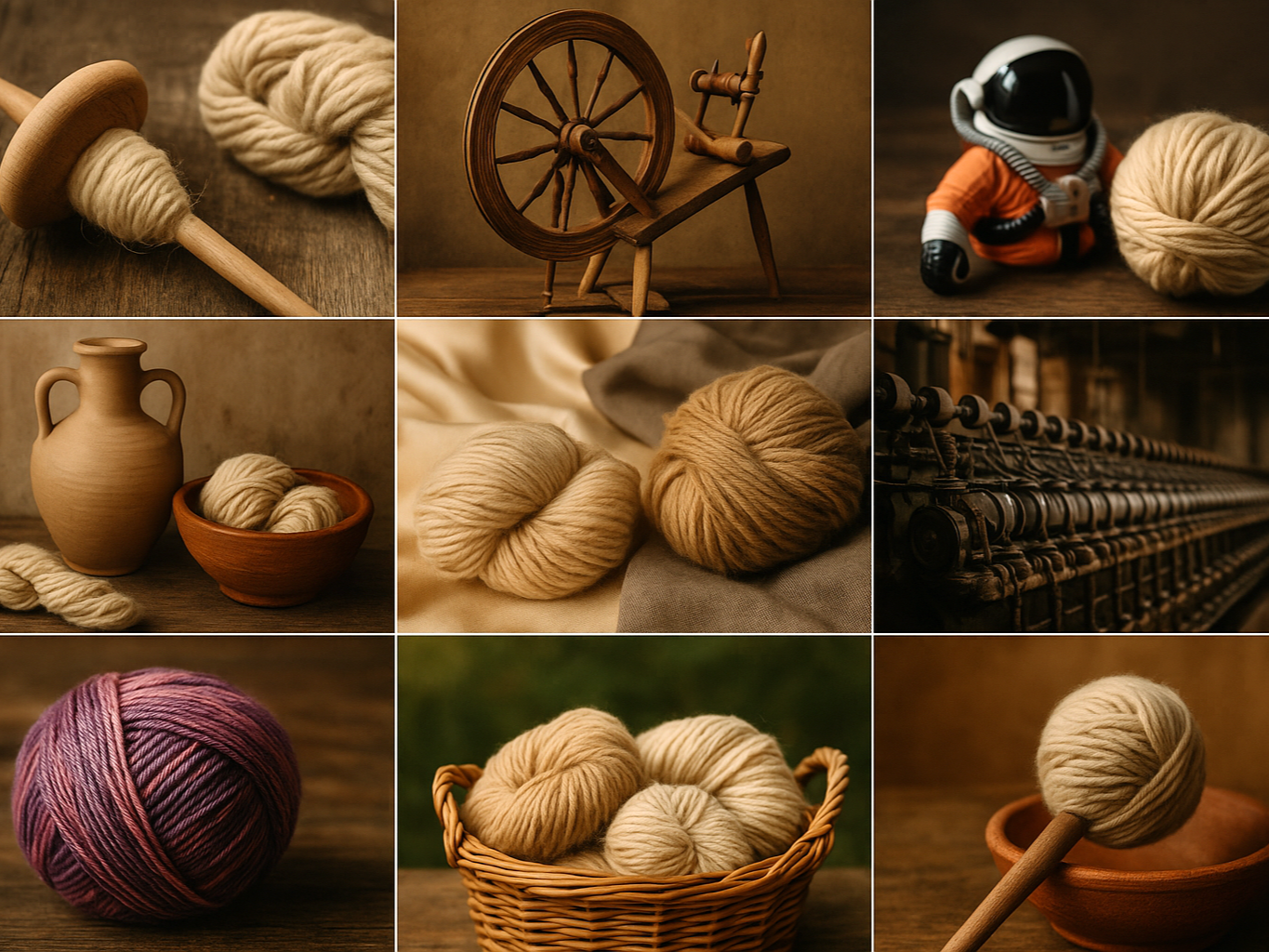#FunFact: From Spinning Wheel to Space Station – The Evolution of Yarn in 10 Stages

Yarn has accompanied humankind for thousands of years – from the very first plant fibers to high-tech fibers in space. Join me on a little journey through history as we explore the 10 key stages of yarn's evolution.
🪢 1. Neolithic Age – The First Fibers
Over 30,000 years ago, people used plant fibers, twisting them into cords and nets. Archaeological finds include flax and wild grasses.
🐑 2. Bronze Age – Domestication of Sheep
The domestication of sheep marked the beginning of the wool era. Early traces from Mesopotamia show selectively bred sheep, making yarn warmer, softer, and more versatile.
🌀 3. Spindle & Hand Spinning
A milestone was the drop spindle, already used in antiquity. It allowed for more even yarn, leading to finer, stronger textiles.
🏺 4. Antiquity – Yarn in Daily Life
In Egypt, Greece, and Rome, flax, wool, and cotton were widely processed. Textiles were not only practical but also served as status symbols – politically and economically significant.
🏰 5. Middle Ages – Spinning Wheel & Guilds
The spinning wheel arrived in Europe around the 11th/12th century, greatly accelerating production. Spinning became a typical women's craft, often organized within guilds.
✨ 6. Renaissance – Yarn as a Fashion Factor
Silk yarns from Asia reached Europe through trade routes. Luxurious fabrics for kings and merchants turned yarn into a symbol of wealth and prestige.
⚙️ 7. Industrial Revolution – Spinning Jenny & Co.
In the 18th century, machines like the Spinning Jenny transformed production. Yarn could now be made in mass quantities – faster and cheaper than ever before.
👩🏭 8. 20th Century – Synthetic Fibers
The invention of nylon in 1935 began the era of synthetics. Polyester, acrylic, and more made yarns cheaper, easier to care for, and more versatile.
🌱 9. Sustainability & Eco Fibers
Since the 2000s, the trend toward organic wool, recycled yarns, and alternative fibers like bamboo or milk protein has grown. Yarn has become both material and environmental statement.
🚀 10. Yarn in Space – From Earth to the ISS
High-tech yarns like Kevlar and carbon fibers are used in space – from spacesuits to filters and cables. Even aboard the ISS, textiles are tested because they are lightweight, flexible, and incredibly strong.
💛 My Takeaway:
From the drop spindle to the space station – yarn is far more than just material. It tells the story of human ingenuity, culture, and technology. Every stitch we make today is part of this long evolution.
💬 Which stage of yarn history fascinates you the most?
Share your thoughts in my Facebook group or tag me with #knittingtrends.
#knittingtrends #madeinlove #funfacts #yarn #history
Yarn is not just material – it's the red thread that runs through human history.
Warmly,
Kathrin 🧶
Want to dive deeper into the world of stitches?
Explore my patterns, browse the blog, or join our community!
